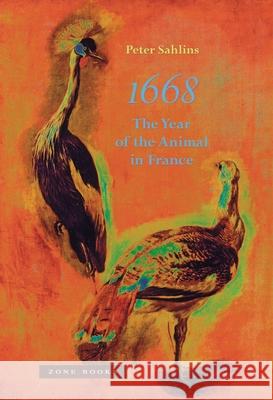1668: The Year of the Animal in France » książka
1668: The Year of the Animal in France
ISBN-13: 9781935408994 / Angielski / Twarda / 2017 / 496 str.
The poet Jean de La Fontaine famously dedicated his Fables in 1668 to Louis XIV's son, declaring in verse that "animals I choose/to proffer lessons that we all might use." Less well known is that La Fontaine's Fables appeared within a peak moment of cultural production about animals, the work of a small, but privileged coterie of writers, artists, philosophers, physicians, and scientists. In this highly original study, historian Peter Sahlins argues that 1668 witnessed the shift of an entire way of thinking about the relationship of animals and humans -- what Sahlins calls "Renaissance humanimalism" -- toward early modern expressions of classical naturalism and mechanism. At the same time, Louis XIV used the animals of his newly constructed Versailles menagerie and of the Royal Labyrinth to transform the symbolic language of French absolutism. In the aftermath of 1668, Louis XIV adopted a new model of sovereignty in which absolute authority is justified by animal collections and the bestial nature of his human subjects. 1668: The Year of the Animal in France is a unique interdisciplinary study with rich visual documentation and interpretation of the symbolic lives and afterlives of the animal kingdom at Versailles and Paris. Sahlins observes these animals in their native habitats, in the animal palace designed by Louis Le Vau, the paintings and tapestries of Charles Le Brun, the garden installations of Andre Le Notre, the writings of Charles Perrault and his brother Claude, the poetry of Madeleine de Scudery, the philosophy of Rene Descartes, the engravings of Sebastien Leclerc, and the transfusion experiments of Jean Denis and others. Sahlins transforms the fields of human-animal studies and early modern French history, bringing together the nonhuman and human agents of 1668 -- porcupines and painters, swans and scientists, egrets and engravers, cranes and craftsmen -- in the making of absolutism and mechanism.











